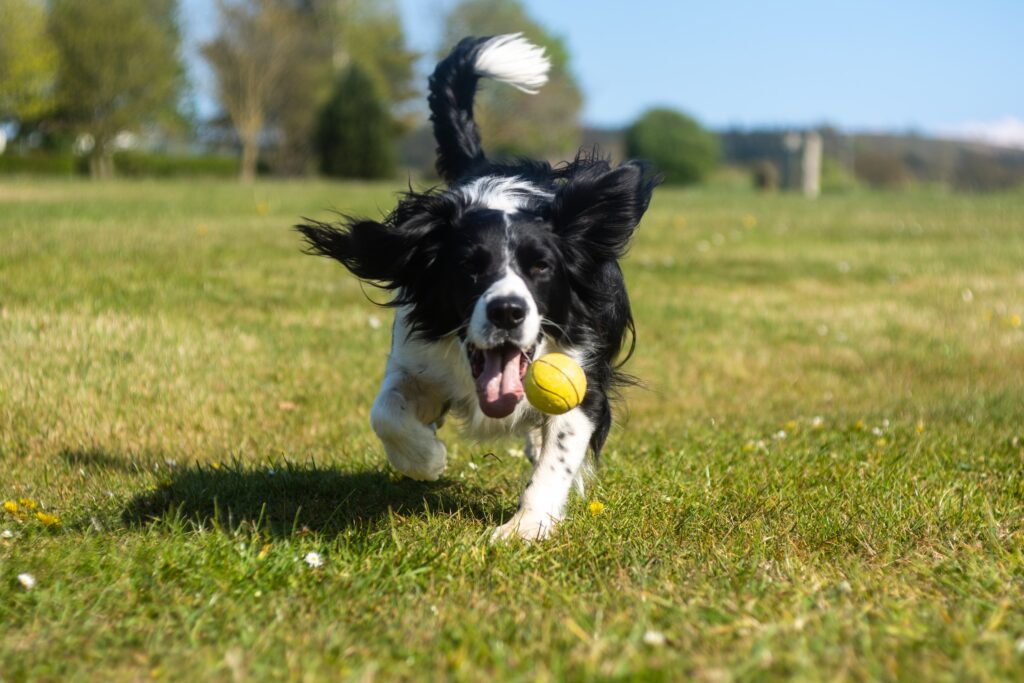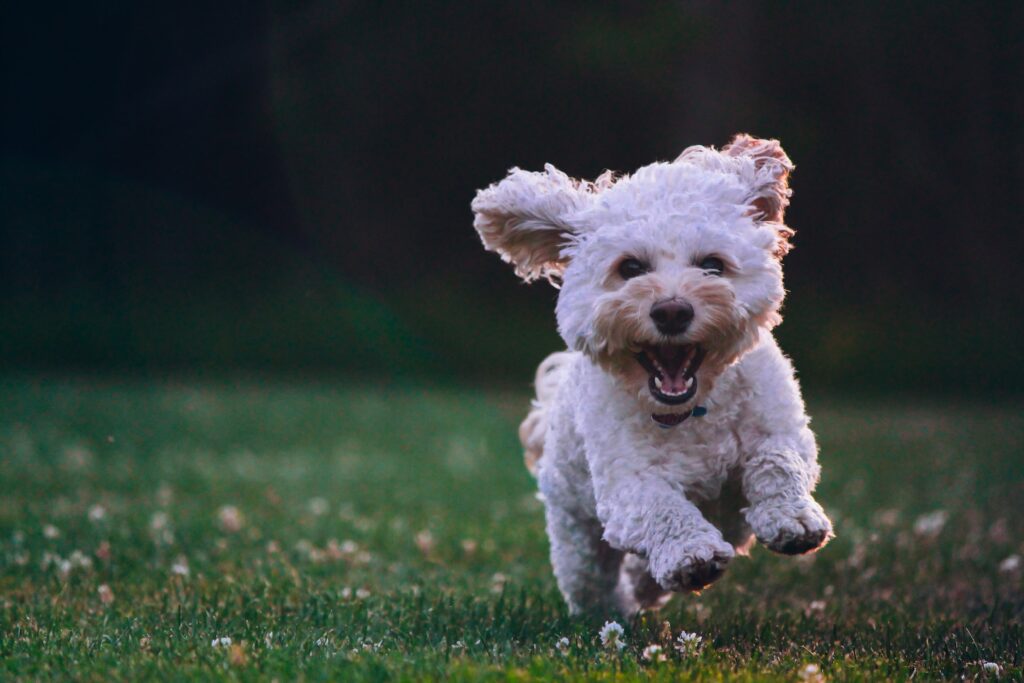
The Complete Guide to Off-Leash Etiquette : Hey there, dog lovers! Let’s talk about something that’s near and dear to our furry friends’ hearts: off-leash time for dogs. We all know how much our canine companions enjoy the great outdoors, and off-leash time gives them the freedom they crave. It’s not just about frolicking in the grass or chasing squirrels (although that’s definitely part of the fun!).
Off-leash time is vital for a dog’s physical and mental well-being. It allows them to explore, socialize, and burn off excess energy, which can lead to a happier and healthier pup. Plus, it strengthens the bond between you and your four-legged buddy, as you get to enjoy quality time together in a natural, unencumbered setting.
Of course, responsible pet ownership is crucial when it comes to off-leash activities, so be sure to choose designated areas, train your dog for recall, and always prioritize safety. So, go ahead and give your pooch the gift of off-leash time—it’s a tail-waggingly good idea!

Why off-leash time is essential for dogs?
Let’s dive into the reasons why off-leash time is so important for our furry pals. Here are six pointers highlighting the need for off-leash time for dogs:
1. Physical Exercise
Dogs, such as energetic breeds like the Siberian Husky or the Border Collie, require ample physical exercise to stay fit and healthy. Off-leash time allows them to run, romp, and explore their surroundings freely, providing a great workout for their muscles and cardiovascular system.
2. Mental Stimulation
Just like humans, dogs need mental stimulation to keep their minds sharp and engaged. When off-leash, they can sniff, investigate, and discover new scents and sights. This mental stimulation is particularly beneficial for intelligent breeds like the Poodle or the Australian Cattle Dog, as it helps prevent boredom and destructive behavior.
3. Socialization Opportunities
Off-leash areas provide valuable opportunities for your furry friend to interact with other dogs and people. It helps them develop social skills, build confidence, and learn appropriate canine communication. Breeds such as the Golden Retriever or the Labrador Retriever, known for their friendly nature, thrive on social interactions and can benefit greatly from off-leash playtime.
4. Bonding Time
Spending quality off-leash time with your dog strengthens the bond between you and your loyal companion. Whether it’s playing fetch or simply enjoying a leisurely walk together, these shared experiences create trust, deepen your connection, and enhance your overall relationship.
5. Natural Instincts
Dogs have innate instincts, and off-leash time allows them to tap into their natural behaviours. Breeds like the Beagle or the Bloodhound have a keen sense of smell, and off-leash exploration lets them follow their noses and indulge in their scent-tracking abilities.
6. Freedom and Joy
Finally, off-leash time brings sheer happiness to our four-legged friends. Witnessing your dog joyfully frolic, wagging their tail in pure bliss, is a heartwarming sight. Whether you have a playful Jack Russell Terrier or a graceful Greyhound, giving them the freedom to run and be their authentic, uninhibited selves fills their lives with unadulterated joy.

How to prepare your dogs for off-leash time?
Remember, each dog is unique, so be patient, consistent, and always adapt your training methods to suit their needs. Now, get ready for some fantastic off-leash adventures with your furry companion! Here are five pointers to get you started:
1. Basic Obedience Training
Lay the foundation with basic obedience training. Teach commands like “sit,” “stay,” and “come” to ensure your dog’s safety and your control over them. Breeds such as the German Shepherd or the Border Collie are known for their trainability, so capitalize on their intelligence and eagerness to learn.
2. Recall Training
A reliable recall is crucial for off-leash activities. Practice recall exercises in a controlled environment, gradually increasing distractions. Use positive reinforcement and reward your dog with treats or praise when they come to you. Breeds like the Golden Retriever or the Australian Shepherd are generally quick learners, making recall training a bit easier.
3. Leash Desensitization
Help your dog become comfortable without a leash by gradually desensitizing them. Start in a safe, enclosed area and let them roam freely while closely supervising. Over time, your pup will gain confidence and understand the freedom of being off-leash. Breeds like the Boxer or the Dalmatian tend to appreciate the extra freedom that comes with off-leash time.
4. Socialization Skills
Ensure your dog is well-socialized before venturing off-leash. Expose them to various environments, people, and other dogs, allowing them to develop good social skills. Encourage positive interactions and monitor their behavior. Breeds like the Labrador Retriever or the Bulldog usually thrive in social settings, making socialization a valuable part of off-leash preparation.
5. Safety Measures
Prioritize safety by considering your dog’s physical well-being. Ensure they are up-to-date on vaccinations, flea, and tick prevention. Additionally, consider fitting them with identification tags and having them microchipped to increase the chances of a safe return if they ever get lost.

Off-leash etiquettes for dogs
Off-leash time for dogs is fantastic, but it’s important to be mindful of certain etiquettes to ensure a positive experience for everyone involved. Here are six pointers on off-leash etiquettes for dogs:
Training, Training, Training
Before venturing into off-leash territory, make sure your furry friend has undergone proper training. Basic obedience commands like “sit,” “stay,” and “come” are essential. This way, you can maintain control over your dog and prevent any potential mishaps. Whether you have a playful Labrador Retriever or an intelligent Border Collie, training is key to off-leash success.
Respect Leash Laws and Designated Areas
Not every place allows off-leash dogs, so it’s crucial to respect leash laws and designated areas. Keep an eye out for signs indicating whether your pup can roam freely or needs to be leashed. By following the rules, you’ll ensure the safety of your dog and others.
Recall Responsibly
One of the most important skills your dog should have is reliable recall. When you call them, they should come back promptly. This is especially vital when encountering other dogs, people, or potential hazards. Breeds like Golden Retrievers and Australian Shepherds are often quick learners, so practice recall regularly to keep them safe during off-leash adventures.
Be Mindful of Others
Remember, you’re not the only one enjoying off-leash time. Be considerate of other people, dogs, and wildlife in the area. Keep your pup under control, so they don’t intrude on others’ personal space or frighten anyone. If your dog tends to be overly enthusiastic, it’s a good idea to give other dogs and people some extra space.
Clean Up After Your Pup
No one likes stumbling upon unexpected surprises while enjoying a walk or hike. Be a responsible dog owner and always clean up after your furry friend. Carry waste bags and dispose of them properly to maintain cleanliness and show respect for the environment and others around you.
Be Prepared for the Unexpected
Even with the best training and precautions, unexpected situations can occur. Always be prepared by carrying essentials such as a leash, first aid kit, and water for both you and your dog. It’s better to be over-prepared than caught off guard.
Bonus tip: If you’re unsure about your dog’s behaviour or their readiness for off-leash activities, consult with a professional dog trainer or behaviourist. They can provide guidance tailored to your specific situation, ensuring the best outcome for you and your beloved companion.
Before you go…
Remember, off-leash time is a privilege, and by adhering to these etiquettes, you’re ensuring a positive experience for everyone. So, whether you have a lively Dalmatian or a regal German Shepherd, respect the rules, train your dog well, and enjoy the freedom and joy that comes with off-leash adventures.
Now, go out there and have a pawsome time off-leash with your furry friend!
Frequently Asked Questions
Q1. How do I know if my dog is ready for off-leash time?
A1. Assess your dog’s obedience and recall skills. If they reliably respond to commands, show good socialization with other dogs, and demonstrate self-control, they’re likely ready for off-leash adventures. Gradually introduce them to off-leash areas and monitor their behaviour.
Q2. What breeds are best suited for off-leash activities?
A2. While any breed can enjoy the off-leash time, some breeds, such as Retrievers, Spaniels, and Shepherds, tend to excel due to their trainability, energy levels, and sociability. However, it ultimately depends on your individual dog’s temperament and training.
Q3. Can I let my dog off-leash anywhere?
A3. No, it’s important to respect leash laws and designated off-leash areas. Always research and abide by local regulations. Unauthorized off-leash activities can be unsafe for your dog, disturb wildlife, and inconvenience others.
Q4. How can I prevent my dog from running away during off-leash time?
A4. Building a solid recall command is essential. Practice recall training in controlled environments, gradually increasing distractions. Use positive reinforcement and rewards to reinforce their return. Starting in enclosed spaces can help build confidence.
Q5. What safety measures should I take during the off-leash time?
A5. Ensure your dog’s vaccinations and preventive treatments are up to date. Keep an eye out for potential hazards, like toxic plants or busy roads. Consider carrying a leash, identification tags, and a first aid kit. Supervise your dog at all times and be aware of their behaviour around other dogs and people.


kkk